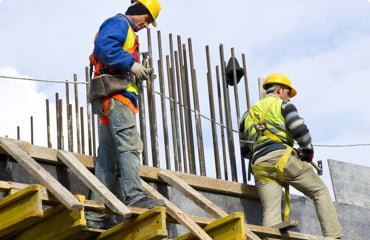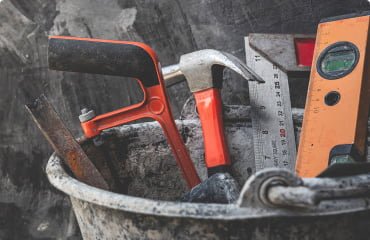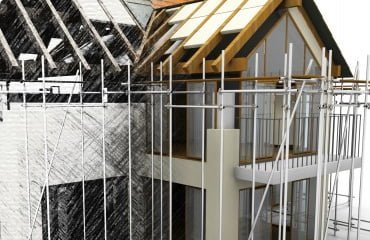We design, supply and install a wide range of modern cladding solutions for all neighborhoods in the Greater Toronto Area (GTA).
- Call us
(+1) 416 871 4841
- Opening time
Mon to Friday 8:00a.m. - 6:00p.m.
- Email us now
[email protected]
Toronto Aluclad LTD
Modern Cladding Supplier & Contractor in Toronto
In Aluclad™ we gathered professional technical cladding advisors, designers, suppliers and installers in order to provide the most reliable services to our clients and partners. Our in-house installation crews are professional carpenters with years of brilliant experience in roofing and cladding industry. They follow the latest Occupational Health & Safety Act (OHSA) guidelines. To learn more about the trendiest modern cladding materials, read the following article.
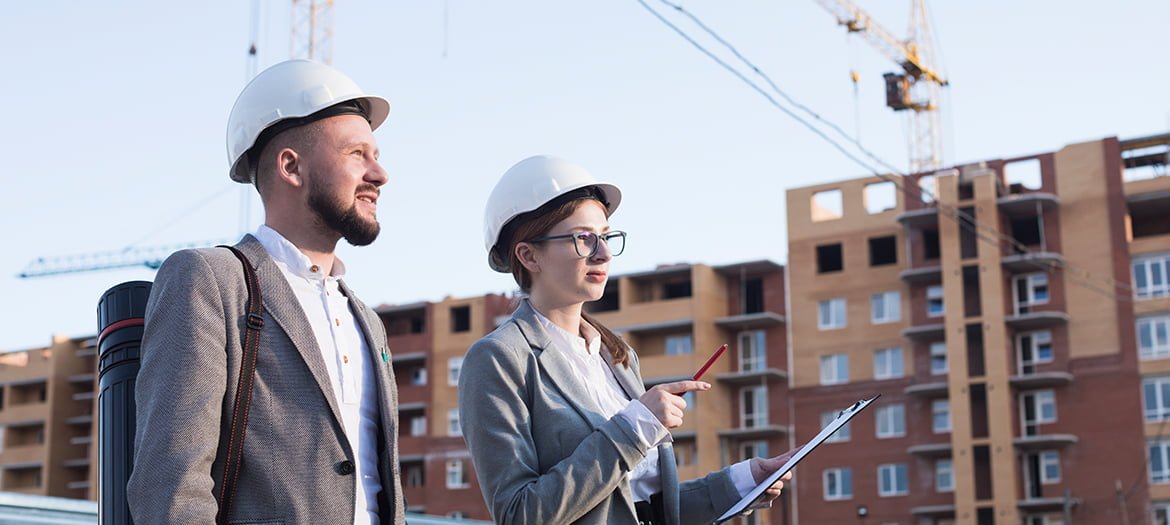
We provide our clients with the most innovative and cutting edge cladding solutions to make their projects stand out. We take care of every detail, from stylish façade design to intact cladding installation.
Residential
Modern Residential Cladding Solutions
At Aluclad LTD, we are proud to offer modern house siding and architectural cladding solutions for Canadian residential properties. With our experienced team of experts and wide selection of sustainable, modern materials, you can trust us to provide the best possible service when it comes to your home’s cladding needs. We take pride in using only the most innovative designs and top-of-the-line products to deliver stunning results for our customers. Whether you’re looking for a simple refresh or a complete transformation, our skilled professionals will work with you to find the perfect solution that fits your unique style. With years of experience in the industry and an eye for cutting-edge trends, we have what it takes to bring your vision to life.
Commercial
Best Commercial Cladding Solutions

Lorem ipsum dolor sit amet, conse ctetur adipiscing elit. Nam nec est arcu dolor psum dolor sit amet.

Lorem ipsum dolor sit amet, conse ctetur adipiscing elit. Nam nec est arcu dolor psum dolor sit amet.

Lorem ipsum dolor sit amet, conse ctetur adipiscing elit. Nam nec est arcu dolor psum dolor sit amet.
We offer commercial cladding solutions such as rainscreen systems, siding and wall coverings. Whether you’re looking for a new or existing build, we have the capacity to meet your needs. Our professional team works closely with clients to ensure their projects are tailored to their exact specifications. We understand that each building is unique and strive to provide high-quality workmanship and competitively priced options according to our clients’ budget and requirements. Aluclad LTD™ is the professional network of the top siding contractors, façade designers, and cladding suppliers in the Greater Toronto Area. From supply to design to installation, Aluclad LTD™ is the one-stop-shop for all of your exterior needs. We supply from the most reliable and well-known brands of North America and Europe who has been in the market for over a decade.
Years of
Experience
30
Complete
Total Projects
99
Happy
Local Clients
74
Toronto Aluclad LTD
Modern Cladding Supplier & Contractor in Toronto
BEFORE & AFTER
The owners are engaged with your project from the preliminary stages to project delivery and after-sales services. In better words, your project will be supervised from start to finish by the real owners of the company. We will never sub-contract your project to any 3rd party cladding sub-contractors! We are THE sub-contractors. We offer 5 years of workmanship warranty for all the projects we deliver.
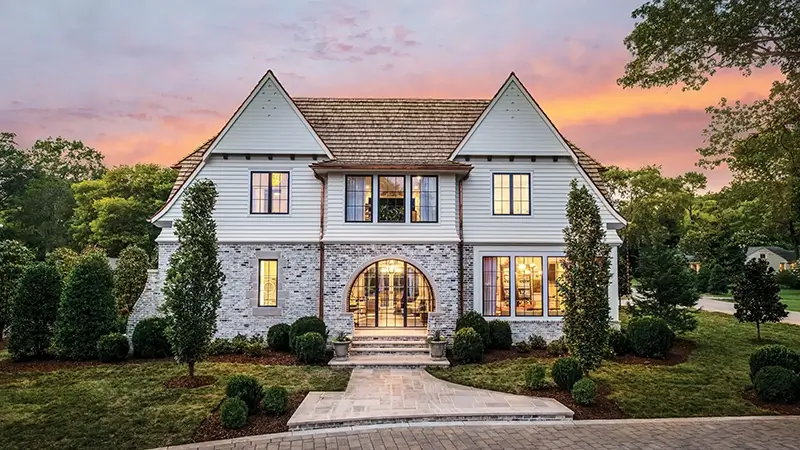
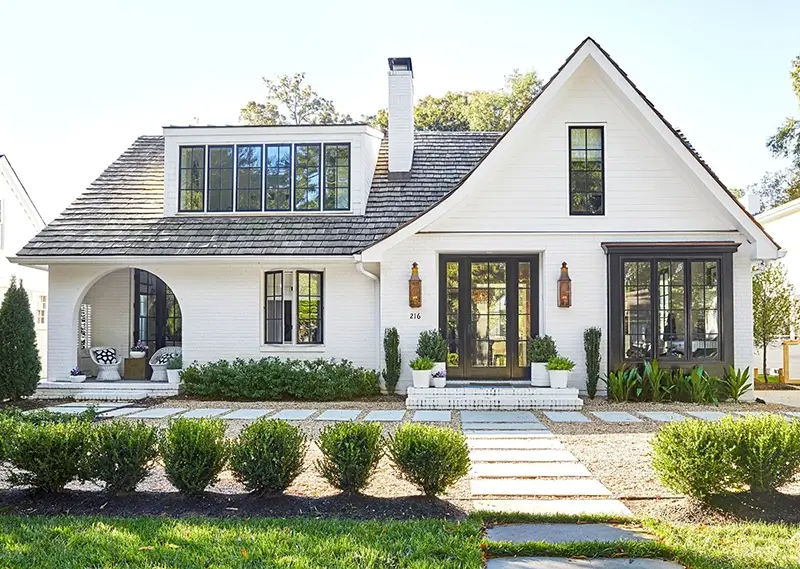




Cladding Materials
Modern Siding Products
- All Cases
- Interiors
- Modern Bridge
- Buildings
- Houses
Building & Construction
Home Fixing & Support
Renovation & Fixing
Building A Sports City
Home & Kitchen Design
official Interior Design
TESTIMONIALS
WHAT OUR CLIENTS SAY
Etiam fermentum non turpis in vivera. Nulla facilisis molestie mattis. Nulla fringilla mollis neque in pretium Nunc posuere ipsum.turpis in vivera. Nulla facilisis molestie mattis.
Haris Milas
construction worker
Etiam fermentum non turpis in vivera. Nulla facilisis molestie mattis. Nulla fringilla mollis neque in pretium Nunc posuere ipsum.turpis in vivera. Nulla facilisis molestie mattis.
Bellal Philips
construction worker
Etiam fermentum non turpis in vivera. Nulla facilisis molestie mattis. Nulla fringilla mollis neque in pretium Nunc posuere ipsum.turpis in vivera. Nulla facilisis molestie mattis.
Anil Barua
construction worker
OUR LATEST NEWS

Biomimetics As a Tool For New Development
- By Hamed
- June 26, 2020
- No Comments
There are many variations of passages of Lorem Ipsum available, but the majority have suffered alteration in ...

View Awesome Manufactures
- By Hamed
- June 26, 2020
- No Comments

We Have a Great Environment
- By Hamed
- June 26, 2020
- No Comments
Exterior Cladding: Frequently Asked Questions
What is an example of cladding?
Cladding refers to a material that is used to cover or coat the external surface of a building or structure for protection or decoration purposes. There are different types of cladding materials available, such as brick, stone, metal, wood, vinyl, and composite materials.
An example of cladding is the use of aluminum panels or steel sheets to cover the exterior walls of a high-rise building. Another example is the use of natural stone or ceramic tiles to cover the facade of a house or commercial building. In some cases, cladding can also refer to the use of materials to cover the interior surfaces of a building, such as decorative tiles on the walls of a bathroom or kitchen.
What are the best siding product for North America and Canada in terms of cost, wear resistance, and aesthetics?
Exterior siding is a great place to begin your home renovation OR construction project. Not only can it boost the value and curb appeal of your property, but it’s also one of the most cost effective improvements you can make.
Solution: A lot has changed in recent years when it comes to exterior cladding materials for homes. New products have been developed that are more stylish than ever before while offering superior insulation properties as well as increased durability and resistance against pests and rot. Here is a list of all the modern cladding products suitable for Canadian weather: Cedar Siding, Aluminum Panels, Traditional Vinyl Siding, Metal Cladding, Precast Concrete Panels, HPL Phenolic and Read More…
What are the most popular house siding materials?
Although many different options exist for house siding materials, some of the most commonly used ones include:
Vinyl: Vinyl is a type of plastic and has become increasingly more popular due to its low-maintenance and cost-effectiveness. It can come in a wide range of textures and colors while still maintaining its resilience and durable characteristics.
Wood: A time-honored favorite, wood siding provides an attractive and unique look that many homeowners opt for because of its classic style. Wood siding is a bit more costly, but can last homeowners a lifetime if taken care of properly.
Aluminum: This is a popular choice among those who want to reduce their energy bills as aluminum siding is extremely resistant to the elements and can prevent air from entering or escaping through cracks. Furthermore, aluminum doesn’t require regular maintenance for it to maintain its protective qualities.
Is Aluminum highly recommended or it's just another trendy product?
Aluminum (or aluminium) has been used as a cladding in buildings for decades and will most likely continue being popular because of its many weather resistant properties such as low maintenance or painting ability – not only does it look great but you don’t need paint every couple years either thanks to anodizing treatments which make them scratch resistant.
How much maintenance should I do on my siding?
How much maintenance is enough for building exterior? It all depends on the type of materials you apply as your siding. For example regular vinyl has been around for years and it’s very durable against weather conditions, but natural wood requires annual care with some solutions like acm panels only needing soap water every other year! With regular vinyl siding there isn’t much maintenance needed outside normal wear-and-tear; however if natural wood was used for cladding then a yearly cleaning solution will be necessary. For ACM Panels you only require occasional soap water dips every other year (depending on climate) whereas for natural stone, precast concrete OR bricks, you only require to pressure-wash the exterior every 8-10 years!
What is architectural cladding?
Architectural cladding is a material that is applied to the exterior of a building to provide a layer of protection from the elements. Cladding can be made from a variety of materials, including wood, aluminum, and stone. It is typically used to improve the appearance of a building, as well as to provide some degree of thermal insulation and weather resistance.
Types of architectural cladding
There are a variety of cladding materials available on the market, each with its own set of benefits and drawbacks.
Wood cladding
Wood cladding is a popular choice for many builders due to its attractive appearance and natural insulation properties. However, wood cladding requires regular maintenance and can be susceptible to rot and insect damage.
Aluminum cladding
Aluminum cladding is a low-maintenance option that is resistant to weathering and corrosion. It is also lightweight and easy to install. However, aluminum cladding can be expensive, and it does not have the same aesthetic appeal as some other materials.
Stone cladding
Stone cladding is a durable option that adds an elegant look to any building. However, it can be expensive and difficult to install.
How is cladding attached to a building?
Cladding is typically attached to the exterior of a building using screws, nails, or adhesives. It is important to make sure that the cladding is properly secured to the building to ensure that it can withstand high winds and other extreme weather conditions.
When choosing cladding for your home or business, it is important to consider the climate in which you live as well as the style of the building. Cladding can be an attractive and functional addition to any property, but it is important to select the right material for your needs.
What are the advantages of architectural cladding?
Cladding can provide a number of benefits to a building, including:
- Improved appearance: Cladding can give a building a more modern and attractive appearance.
- Increased insulation: Cladding can help to increase the insulation of a building, which can lead to lower energy bills.
- Enhanced weather resistance: Cladding can protect a building from the elements, extending its lifespan.
- Reduced maintenance: Cladding materials such as aluminum and stone require little maintenance, making them a cost-effective option over time.
What are the disadvantages of architectural cladding?
While cladding can offer many benefits, there are also some drawbacks to consider:
- Cost: Some cladding materials, such as stone and aluminum, can be expensive.
- Weight: Cladding can add weight to a building, which may require additional support.
- Installation: Installing cladding can be a complex process, and it is important to make sure that it is done correctly.
If you are considering cladding for your home or business and you live in the GTA, contact us to discuss your options.
What is Architectural Façade?
An architectural façade is an exterior wall of a building that is the primary face of the structure. It is also known as the exterior face, and it can be made from a variety of materials, including stone, brick, metal panels, glass, or composite panels, etc. So in general, façade system comprises all of the exterior design elements as well as the components needed to connect or fasten them to the building’s surface.
How Modern Exterior Facade Systems can improve energy efficiency?
The facade of a building envelope typically accounts for a significant percentage of the total heat loss (or gain) and air infiltration. In fact, according to the U.S. Department of Energy, as much as 30 to 40 percent of the energy used to heat and cool commercial buildings is wasted due to air leakage through exterior walls.
One of the most effective ways to reduce this waste is by improving the performance of architectural façade systems with better design, materials, and installation methods that can minimize thermal bridging and air leakage. Good façade design starts with an understanding of how different materials and assemblies interact thermally — in other words, how well they conduct heat — to determine which will be most effective in specific locations on the building envelope.
What are the different types of façade materials?
There are three main types of architectural facade:
- Solid facades: A solid facade is a type of construction in which the exterior walls are made entirely of solid materials such as brick or stone.
- Glazed facades: A glazed facade is a type of construction in which the exterior walls are made mostly of glass.
- Open facades: An open facade is a type of construction in which the exterior walls are made mostly of metal panels, with some areas left open to allow for ventilation or views.
What are the benefits of having a modern architectural façade system?
There are many benefits to having an architectural façade, including:
- Improved aesthetics: An architectural façade can greatly improve the appearance of a building, making it more pleasing to look at and increasing its curb appeal.
- Increased protection: A well-designed architectural façade can help protect a building from the elements, reducing wear and tear and prolonging its lifespan.
- Enhanced safety: An architectural façade can provide an additional layer of protection against fire, wind, and other hazards.
- Improved energy efficiency: A properly designed architectural façade can help to keep a building cooler in summer and warmer in winter, resulting in lower energy bills.
What are the most popular architectural façade solutions?
Brick and stone are the most popular choices for architectural facades due to their durability and classic good looks. Metal panels are a popular choice for contemporary designs, while glass and composite panels can provide a more modern look. No matter what your style or budget, there is an architectural façade solution that will suit your needs. Contact Aluclad LTD™ today for a free consultation! We would be happy to help you choose the right product for your project.
If you’re considering using an architectural façade on your next building project, be sure to weigh the pros and cons carefully to decide if it’s the right choice for you. And if you do decide to use an architectural façade, be sure to contact Aluclad LTD™ for all of your exterior cladding needs! We are the leading provider of architectural façade systems in the Greater Toronto Area, and we would be happy to help you with your project. Contact us today for a free consultation!
What Are Modern Siding Products used for exterior elevations?
Modern siding products are any type of siding material that has been manufactured within the last few decades. This includes vinyl siding, fiber cement siding, metal siding, and composite siding. These materials are more durable and require less maintenance than traditional siding materials like wood or asphalt shingles.
There are a variety of modern siding products available on the market, each with its own advantages and disadvantages. Vinyl siding is one of the most popular choices due to its low cost and easy maintenance. Fiber cement siding is a more durable option, but it is also more expensive. Metal siding is available in a variety of styles and can be either painted or left natural. Wood siding is a classic choice that can give a home a rustic look, but it requires more maintenance than other options. Composite siding is made from recycled materials and offers both durability and style.
Why do we need more sustainable and durable materials for building exterior?
Sustainability is important for a number of reasons. It helps to conserve resources, reduces pollution and waste, and mitigates the impact of our activities on the environment. Durability is also important because it helps to prolong the life of a product and reduce the need for repairs or replacement.
When it comes to architectural facades, sustainability and durability are especially important considerations. These products are exposed to the elements 24 hours a day, 365 days a year. They must be able to withstand high winds, heavy rains, and extreme temperatures. They also need to be low maintenance so that they don’t add unnecessary costs or labor to the building owner over time.
That’s why Aluclad LTD™ only carries modern siding products that are both sustainable and durable. We believe that it is important to offer our customers products that will last for years to come. Contact us today for a free consultation! We would be happy to help you choose the right product for your project.
If you’re looking for architectural façade systems or modern siding products in the Greater Toronto Area, look no further than Aluclad LTD™. We are the one-stop-shop for all of your exterior façade needs, and we supply from the most reliable and well-known brands of North America and Europe. Our owners are engaged with your project from start to finish, and we will never subcontract your project to any third party cladding subcontractors. Contact us today for a free consultation!
What is Feature Wall (Accent Wall)?
A feature wall, sometimes also known as a striking element wall or an eye-catching element wall, is a wall that adds interest and energy to a space using texture, color, and contrast. It’s like standing out from the crowd. A feature wall may have an impact on how a room appears and feels, reflecting your design aesthetic while simultaneously creating a visual impact.
Creating a feature wall is a great way to add interest and energy to any room in your home. When done right, a feature wall can reinforce your design style and make a real impact on the look and feel of the space. Use the tips above to select the perfect feature wall for your home.
Feature walls are commonly used in living rooms, but can be used in any type of room including bedrooms, home offices, hallways and kitchens. They can also be used outdoors. When selecting a feature wall, consider the following:
- The size of the feature wall. A feature wall should be large enough to make a statement but not so large that it overpowers the space. Analyze the existing furniture and decor in the room to determine the best size for the feature wall.
- The wall’s location. The feature wall should be the first thing you see when you enter the room.
- The wall’s purpose. What do you want the feature wall to accomplish? Do you want it to add color or texture? Do you want it to make a statement or be a focal point in the room?
- The materials used. A feature wall can be created with paint, wallpaper, tile, stone, brick or any number of other materials. Consider what will work best in the space and with your overall design style.
Some feature walls are more subtle than others. If you want your feature wall to be a real statement piece, consider using bold colors or patterns, large-scale graphics, or an interesting texture. For a more understated look, select a material in a neutral color or opt for a simple pattern. Ready to get started on your feature wall? Browse our selection of materials to find the perfect option for your space.
What is difference between siding and cladding?
Siding is typically installed directly onto the exterior wall surface of a building, which may or may not be insulated. It is usually fastened directly to the sheathing or framing of the building and serves as a protective and decorative layer.
In contrast, cladding is often installed as part of an insulated wall assembly, where it is furred out from the exterior sheathing to create a drainage plane and a water-resistant barrier (WRB). This means that the cladding is installed over a layer of insulation, and there is a gap between the cladding and the sheathing that allows for proper drainage and ventilation. This approach helps to improve the energy efficiency and weather resistance of the building.
It’s worth noting that the terms siding and cladding can still be used interchangeably in some regions and industries, but in general, the use of cladding often implies a more complex and integrated approach to building envelope design.



